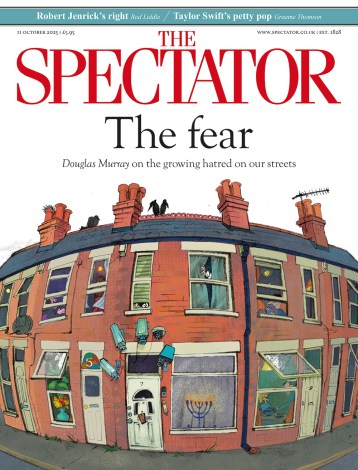
Last weekend, as part of Open House London, the Government Art Collection flung open its doors to allcomers, probably some Spectator readers among them. Its energetic acquisitions and commissioning policy over past decades has made it one of our country’s most valuable cultural resources — yet those of us who don’t stalk the corridors of power may still be only vaguely aware of its existence, let alone the astonishing breadth of its collections. These span four centuries and now contain around 13,500 works of art in almost every medium you can think of.
The sceptic might suppose that a collection of this size might on occasion have sacrificed quality for quantity, but it has been built up skilfully under the watchful eye of a stellar board of advisers, the directors of the National and National Portrait Galleries and the Tate among them, and the results are, unsurprisingly, impressive. Three quarters of the GAC’s works are out on loan around the world at any one time, but a sample is on display in the viewing area of its offices in a cul-de-sac off the Tottenham Court Road — an unlikely and unadvertised location. When I visited, the recently acquired ‘High Street’ series of prints by Eric Ravilious hung near a powerful Keith Vaughan and Jeremy Deller’s screenprint ‘History of the World’. Ahead was a vitrine of glass objets by Matthew Darbyshire that positively sizzles with light and colour, and was in the running for the residence of the British Embassy in Paris, which has offered a prime showcase for the best of contemporary British art since Michael Jay was ambassador in the Nineties. On other walls were landscapes and townscapes by William Marlow and Robert Smirke from the historical side of the collection.
Almost half of its £551,000 annual grant from the DCMS is allocated for purchasing new work (the remainder goes on conservation, transport and admin), and a large part of that goes towards commissioning pieces for particular sites. The British Embassy in Madrid has just moved into I.M. Pei’s glittering new Torre Espacio, and opened a fortnight ago with Marta Marcé’s stylish glass installation, which links all four floors with a glowing column of backlit and brightly spotted glass. This, coupled with Liliane Lijn’s slowly revolving kinetic cone, reflects the embassy’s move to one of Spain’s most talked-about new buildings, and sets a bracingly contemporary agenda for its new quarters.
Another recent commission is Conrad Shawcross’s roof-high sculpture ‘Axiom’, installed in the atrium of the Ministry of Justice building in February. It is an elaborate tetrahedric tower, spiralling up from floor to ceiling in a triple helix, ‘like an alien strand of DNA that could continue into infinity without ever repeating itself’, as Shawcross puts it. He chose wood to soften the brutalist 1970s architecture of the ministry, and the idea of a tower that in theory could stretch into infinity — but for its own structural weaknesses — as a loose metaphor for the ideal, so often sadly flawed, of justice. Perhaps predictably, along with ‘a piece of art made from old lightbulbs’ and the Liliane Lijn cone described above, ‘Axiom’ attracted the bile of the Telegraph in a recent article suggesting that in dire times government money is wasted on art — especially art that is not going to be seen by most of those who pay for it.
It is partly to offset such sniping that the faint air of secrecy that has hitherto shrouded the collection is being actively dispelled. And it is plainly at odds with the public’s right to know what their money is being spent on, as is readily acknowledged by its director, Penny Johnson. She has initiated regular evening tours, and the GAC has participated in Museums and Galleries Month and Open House, both innovations unimaginable in the old Sir Humphrey days. Visitors will rarely see the same works twice, however: the whole collection is permanently on the move, as becomes clear when you visit the racking area downstairs, row upon row of rolling screens hung with works of every description, the majority already earmarked by blue clips for transit to an embassy, residence, or minister’s office. ‘It’s a huge juggling act, with works coming and going daily,’ says Johnson, ‘which is why we never use the “S” word — storage. Nothing is ever here for long enough.’ The term ‘cultural diplomacy’ could have been coined for Johnson’s job, adroitly steering a balance between the differing demands of government offices — or the differing tastes of Cabinet ministers — while fighting her corner for imaginative arts investment in the teeth of public-service cuts. Increasingly, we all have the opportunity to judge whether it is money well spent.





Comments